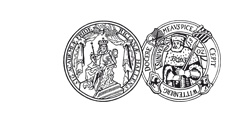Research
This page is under construction.
Functional polymers and colloidal building blocks are the most important systems in our physicochemical research. We usually synthesize these materials ourselves and then use physical chemistry methods to characterize structure and behavior in different environments. Our methods include dynamic and static light scattering, extinction and emission spectroscopy, atomic force microscopy, electron microscopy as well as X-ray and neutron scattering methods. We support our experimental results with theoretical simulations, which are also used as the basis for a rational material design. We build functional materials with different functionality, e.g. with processes of colloidal self-assembly. By using responsive polymers, we achieve switchable properties.
Currently, our research includes the following topics:
Phase Transitions in Dilute and Concentrated Systems
In this research area we are investigating the phase transition behaviour of narrowly distributed LCST and UCST polymers, the impact of terminal groups, polyphilic polymers, core-shell-microgels, as well as binary systems. We study the dynamics of phase transitions and the correlations between local and global structure and dynamics.
Nanohybrid Materials and Nanostructuring
We are investigating inorganic/organic nano-hybrid structures, fabricated via self-assembly at interfaces as well as in continuous phase – which is an alternative bottom-up route to classical nano-structuring via lithography. Additionally, we employ 3D printing techniques for the preparation of adaptive composite hydrogels.
Functional Polymers at Interfaces
We study the (nano)structure and dynamics in interfacial systems with respect to the interfacial chemistry and -topography. By using a broad spectrum of methods involving techniques like microscopy, scattering and spectroscopy we are able to investigate the behaviour of responsive homopolymers, microgels, block copolymers and terpolymers on different interfaces, such as, planar interfaces (e.g. water/air) and curved interfaces (e.g. nanoparticles).
Bioinspired Polymers and Polymer Materials
We are interested in the structure-property relationships of bioinspired polymers as a modern class of materials. For this we utilize pseudo peptides, glycomacromolecules and different biopolymers and use a broad spectrum of analytical methods like microscopy, scattering and spectroscopy.




